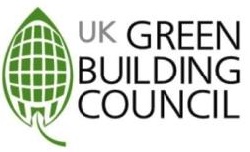Biodiversity report published

UK-GBC Biodiversity Task Group releases final report and recommendations
UK-GBC task group launches report and guidance for industry today.
The UK-GBC has published a new report today on “Biodiversity and the Built Environment”, the product of 6 months work by its Biodiversity Task Group.
Although the construction and property industry is traditionally seen as having a negative influence on wildlife and habitats, the UK-GBC argues that the development and refurbishment of buildings can actually improve the ecological value of a site, if done well.
RELEVANT LINKS:
- Download the executive summary of the report
- Download the full report and appendices
- Download the sector-specific guidance
- Download supporting case studies
- Access the new UK-GBC ‘Biodiversity Portal’
The report contains:
1. Guidance, specific to developers, landlords, contractors and consultants on enhancing biodiversity in the built environment. This includes guidance on raising staff awareness, better training and reporting on Key Performance Indicators.
2. Recommendations to improve the main sustainability tools (BREEAM, Code for Sustainable Homes, CEEQUAL etc) to better incorporate assessment of biodiversity. This has been done in collaboration with the tool owners.
3. Recommendations for the industry, local and central government which would help improve the consistency of biodiversity measurement and reporting, in order to set meaningful targets in the future.
The task group also reviewed information and resources available to the industry on biodiversity. Finding it to be dispersed and sometimes inaccessible, UK-GBC, in dialogue with stakeholders, is launching an online ‘biodiversity portal’ through www.ukgbc.org to help the industry better navigate the information and sign-post it to the most useful resources. This will go live this week and will be constantly updated.
Paul King, Chief Executive of the UK Green Building Council said:
“All too often our mindset is simply to reduce the negative impacts from construction and development. But it’s important to think about how we can actually increase positive impacts - for people, wildlife and the economy. That’s exactly what the Biodiversity Task Group has done.
“Development done well can and should actually create habitats in which wild species thrive, and a habitat for the human species that we can all enjoy. Green roofs, living walls, and good old-fashioned parks and green spaces in our built environment can make us all feel happier and healthier, and give something back to nature. There is also evidence emerging of the economic value of biodiversity enhancement, which will be a critical driver for the industry.
“The UK-GBC Task Group has produced some practical recommendations, best practice guidance and also a web portal for all the relevant information. It’s also provided inspiration as to how the industry can genuinely add value, for people and wildlife.”
Dr Carol Williams, Chair of the UK-GBC Biodiversity Task Group, said:
“Biodiversity is a vital component of healthy, well-functioning ecosystems – on which we all ultimately depend. The construction and property sector has been pilloried in the past for its negative impact on green space, wildlife and habitat – but this report shows that the industry can actually have a positive influence on ecological value. This report has been a collaboration between the industry, NGOs and government agencies and shows the appetite for making biodiversity enhancement not only good for the environment, but integral to the way we do business.”
KEY RECOMMENDATIONS
1. Stakeholders should use the UK-GBC online ‘portal’ as a first-port-of-call for information on biodiversity and the built environment.
2. Industry should use the UK-GBC sector-specific biodiversity guidance
3. Existing sustainability tools should be further improved to take biodiversity into account by incorporating the principles of the proposed methodology outlined by the task group.
4. A standard method should be established for collating information about changes to biodiversity as a result of development. Targets can then be set relative to this information.
5. The industry should release information obtained on biodiversity change for use in existing reporting systems.
6. The Department for Communities and Local Government should reinstate the core output indicator for habitat areas and species within Local Development Framework guidance.
7. Guidance on measuring, reporting on, and setting targets for biodiversity should be incorporated into PPS9 and its associated guidance documents.
8. Government should consider the addition of specific features of the built environment to the list of Biodiversity Action Plan priority habitats (e.g. green roofs and other biodiversity features).
9. The Sustainable Construction Strategy should incorporate the recommendations of this report and once a baseline is established, implement an annual cycle of reporting on biodiversity change. The strategy should identify a process for auditing progress against these targets.
10. UK-GBC should encourage any future Global Reporting Initiative construction and real estate sector supplement to develop appropriate biodiversity indicators and then aim to publicise these indicators amongst the UK-GBC membership
You can return to the main Market News page, or press the Back button on your browser.

